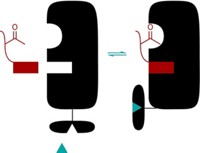Advertisement
Grab your lab coat. Let's get started
Welcome!
Welcome!
Create an account below to get 6 C&EN articles per month, receive newsletters and more - all free.
It seems this is your first time logging in online. Please enter the following information to continue.
As an ACS member you automatically get access to this site. All we need is few more details to create your reading experience.
Not you? Sign in with a different account.
Not you? Sign in with a different account.
ERROR 1
ERROR 1
ERROR 2
ERROR 2
ERROR 2
ERROR 2
ERROR 2
Password and Confirm password must match.
If you have an ACS member number, please enter it here so we can link this account to your membership. (optional)
ERROR 2
ACS values your privacy. By submitting your information, you are gaining access to C&EN and subscribing to our weekly newsletter. We use the information you provide to make your reading experience better, and we will never sell your data to third party members.
Business
Revisiting Resveratrol
More results question molecular link between red wine compound and its antiaging activity
by Carmen Drahl
December 14, 2009
| A version of this story appeared in
Volume 87, Issue 50
A glass of red wine might hold a certain mystique, but its mystery on a molecular level runs far deeper. That’s largely because of resveratrol, a compound in red wine and many plants. In animal tests, resveratrol has shown potential for protecting against a number of diseases, from stroke to cancer. But perhaps the most controversial of its potential benefits comes from its effects on longevity in simple animals such as fruit flies and worms, and in more complex animals such as obese mice.
It’s been suggested that resveratrol boosts these animals’ life-spans by acting on a specific family of enzymes called sirtuins that remove acetyl groups from proteins. But resveratrol affects a slew of biochemical pathways, and even after years of research, it’s not clear how the sirtuins fit into the antiaging picture, if at all.
“Structurally, resveratrol is simple, but like a lot of natural products, it has multiple actions,” says Peter DiStefano, chief scientific officer at Elixir Pharmaceuticals, a company that has explored sirtuin pathways.
Biologist David A. Sinclair and coworkers at Harvard Medical School were the first to link resveratrol and the sirtuins. Using a fluorescent peptide substrate that lights up upon removal of an acetyl group, the team detected sirtuin activation in the presence of resveratrol (Nature 2003, 425, 191). Sinclair later cofounded Sirtris Pharmaceuticals, a company focused on the therapeutic potential of the sirtuin pathway. In 2008, GlaxoSmithKline acquired Sirtris for $720 million.
Soon after Sirtris was founded, the link between sirtuins and resveratrol drew additional scrutiny. A set of studies showed that the fluorescent peptide throws off the assay results. Without the fluorophore around, resveratrol can’t activate sirtuin enzymes under the assay conditions (J. Biol. Chem. 2005, 280, 17038 and 17187; Chem. Biol. Drug Des. 2009, 74, 619). “In my mind, the resveratrol claim is an artifact,” says DiStefano, who coauthored one of the studies.
The results don’t necessarily mean that the sirtuin result was a red herring, says Matt R. Kaeberlein of the University of Washington, one of DiStefano’s coauthors. Sirtuins remove acetyl groups from a wide variety of substrates, and a given assay might be looking at deacetylation of model peptides for only a couple of those substrates. “It’s really hard to prove that there isn’t some specific substrate” for which resveratrol will activate the sirtuins, he says. “Clearly, this fluorescent substrate works. The question is, ‘Are there biologically relevant substrates?’ ”

Resveratrol has also attracted attention because it appears to mimic gene changes related to caloric restriction, which for decades has been known to extend life-spans in animal models (C&EN, Aug. 3, page 36). And genetic tests that attempt to deconvolute resveratrol’s antiaging activity still point to some kind of sirtuin connection, says molecular biologist Cynthia Kenyon of the University of California, San Francisco. “It’s a story that almost makes sense, but not quite,” she says. “Why is it that you need sirtuins for resveratrol to do what it does, and yet resveratrol doesn’t seem to be activating sirtuins?”
It takes more than a single assay to define such complex biochemistry, DiStefano says. Elixir isn’t pursuing resveratrol, but the company has developed other ways to measure sirtuin activation, such as a proprietary assay that measures the formation of radioactively labeled nicotinamide (Methods 2005, 36, 346). Sirtuins release one molecule of nicotinamide from a hydrolyzed cofactor for every deacetylation event.
Pharmaceutical firm Amgen has also described assays for measuring sirtuin activity (Anal. Biochem. 2008, 378, 53). The first of these assays is based on microfluidics. The assay also employs a fluorescent peptide substrate but is designed to minimize interference from fluorescent compounds. The second Amgen assay couples turnover of the sirtuin enzymes’ cofactor to a light-generating process catalyzed by a bacterial luciferase enzyme.
“Secondary screens are important and necessary to verify whether or not resveratrol activates the enzyme,” DiStefano says.
In addition to finding valid assays, it would be nice to determine what the effects of resveratrol are, if any, in mice that lack individual sirtuins, Kaeberlein says.
In the end, the resveratrol excitement is about whether it has antiaging potential in people, which has yet to be evaluated by the Food & Drug Administration. “Whether resveratrol or sirtuin-activating compounds have significant biological effects in humans remains unclear,” Kaeberlein says.
Sirtris is testing a proprietary formulation of resveratrol called SRT-501 in cancer patients, but the firm is mainly focused on testing more selective sirtuin activators for treating a variety of diseases, including type 2 diabetes, says biochemist George Vlasuk, president of the company. “We’ve always considered resveratrol to be an interesting compound from a proof-of-concept point of view,” he says. Although several studies indicate a sirtuin dependence, resveratrol’s many activities complicate researchers’ understanding of its mode of action, he adds.
Researchers who are interested in understanding resveratrol and the sirtuins will be looking to clinical trials for clues, says Kenyon, a cofounder of Elixir. Even if resveratrol doesn’t directly activate sirtuins, it’s still worth investigating for many other reasons, and the sirtuins are still major metabolic regulators, she adds.
“There’s a lot of interesting stuff going on with resveratrol and a lot of interesting stuff going on with the sirtuins,” Kaeberlein says. “How it fits together is the big question.”





Join the conversation
Contact the reporter
Submit a Letter to the Editor for publication
Engage with us on Twitter